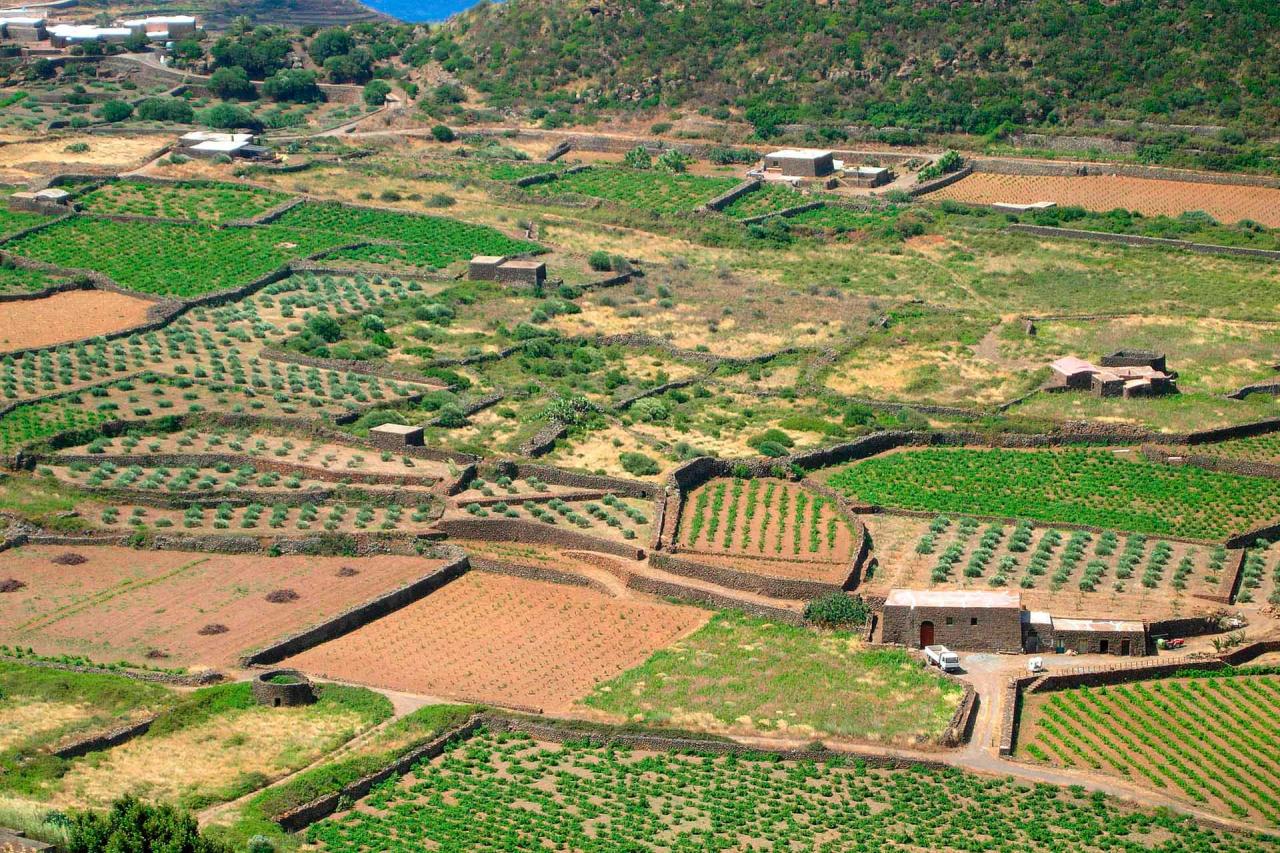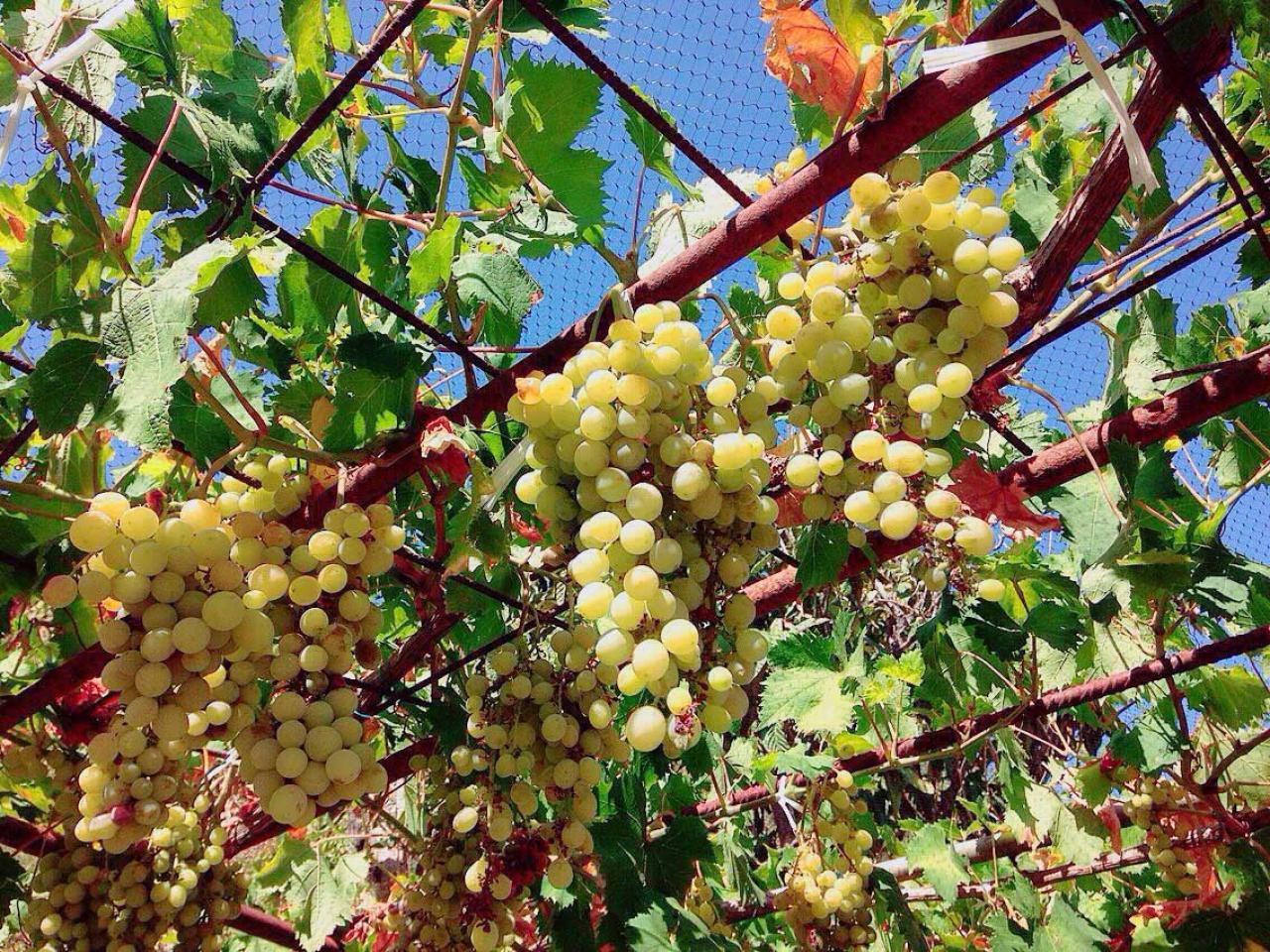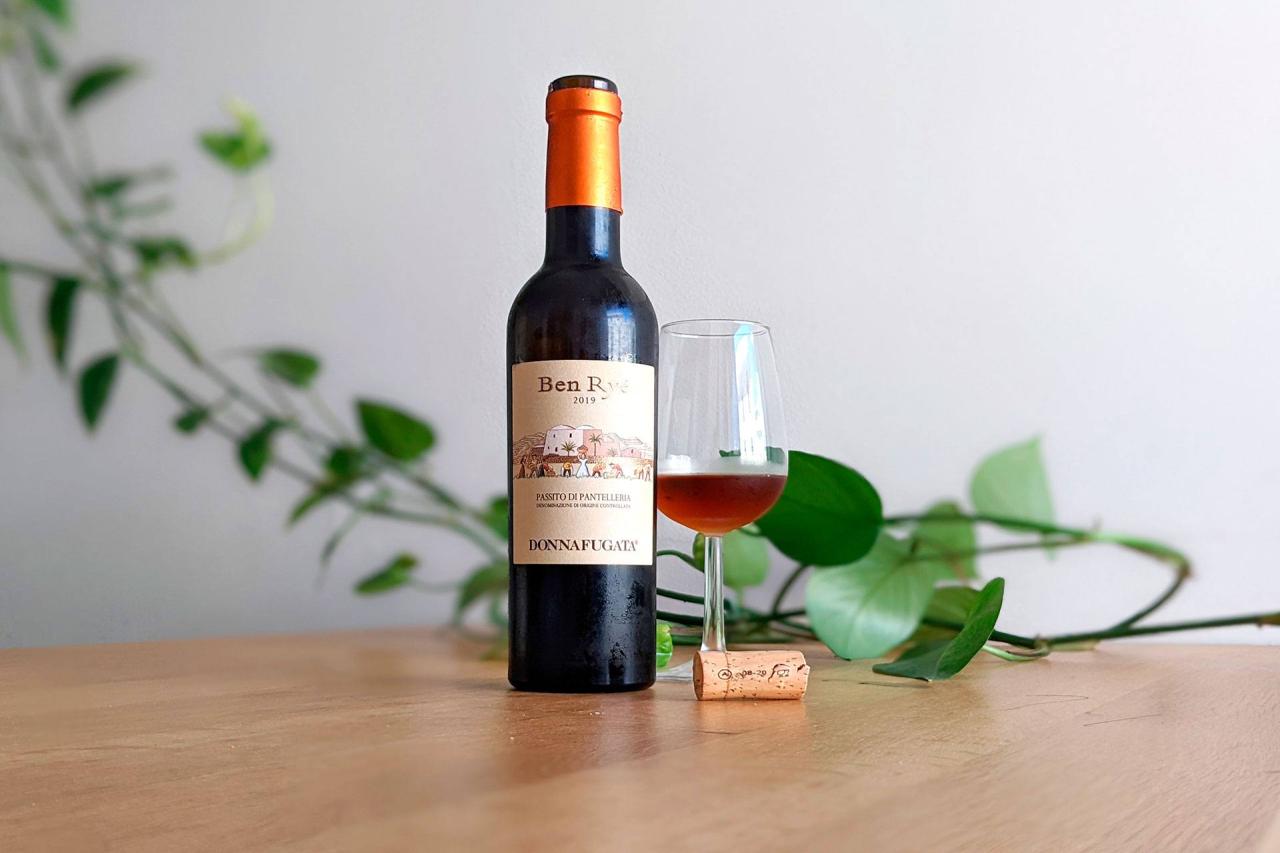This process can take place using two techniques: naturally, on the plant, or after the harvest, on racks or mats placed in areas set up such as lofts, where temperature and humidity are kept constant and controlled. In these conditions, the grape dehydrates, losing almost all the water while increasing sugar concentration. The result is a sweet wine, extremely aromatic with intense and rich flavors.
But, while Passito wines are produced all over the Bel Paese, Passito di Pantelleria is a white passito wine produced exclusively on the island of the same name with Zibibbo grape (also known as Moscato d'Alessandria).
Its origin is ancient, probably dating back to the Arab domination of the 9th century AD, but DOC appellation Passito di Pantelleria was established in the 70s. Its reputation is nonetheless widely spread, as the wine is known as the "yellow gold of Pantelleria"
Once the grapes are suitably dried, the winemaker does the rest: a slow fermentation of the must leads to sweet wine, full of sunshine and softness, with a distinctive aromatic scent. The whole process must take place on the island, by law, and the wine can enter the market from 1 July following the harvest.
Get updates on the latest posts and more from Wine Bugle straight to your inbox.

Pantelleria and its terroir
Also known as the black pearl of the Mediterranean, Pantelleria is a small volcanic island, only 15 km long and located at the same latitude as North Africa, at the southern end of the belt within which it is possible to grow vines.
The climate has a huge impact on the cultivation of vines on the island. The African summer temperatures and the absence of rain aggravated by the continuous winds are the climatic leitmotivs of the island. The most influential factor is the hot sirocco wind that blows impetuously from Africa. It is no coincidence that the island's name derives from the Arabic "daughter of the wind". Another determining factor is the lack of freshwater sources and low rainfall.
This has prompted winemakers to place the vines in cavities carved into the lava soil that provide protection from the wind and can collect water from nighttime humidity. This cultivation system is locally called the 'alberello pantesco' and UNESCO has recognized it as a World Heritage Site.
The soil is volcanic and loose, with good porosity. The presence of pumice, in addition to the hilly conformation, made it necessary to contain the soil and to build the famous terraces with dry stone walls in lava stone. This immense human effort, initiated by the Romans, has contributed to the island unique and fascinating agricultural landscape, made up of splendid vineyards up to 400 m high, overlooking the sea.
Precisely due to the extreme soil and climatic conditions, viticulture on the island is defined as heroic, but despite this, the vine remains the largest cultivation in Pantelleria and one of the greatest revenues together with tourism.

Zibibbo grape
The Moscato d'Alessandria grape, locally known as Zibibbo, was imported by the Phoenicians and experienced a wide diffusion on the island at the time of the Arab domination when it was cultivated for the production of raisins.
According to some authors, the popular name of Zibibbo, used in Pantelleria and throughout Sicily, probably derives from the Arabic word Zaibib which means dried grape.
Zibibbo grapes are grown throughout Sicily. However, only in Pantelleria can they reach the best quality with large, very sweet, and fleshy berries, with particular and intense aromas. Today Zibibbo represents over 95% of the vines present on the island and are used mainly for producing different wines, including a liqueur version obtained with the addition of alcohol or Zibibbo grappa, some dry wines, and the famous Moscato di Pantelleria, made from fresh grapes.
Vinification
By law, all stages of Passito production must take place on the island of Pantelleria, Italy (except for bottling and only in some cases).
The harvest, which takes place manually, usually starts from mid-August and then continues in the cooler areas until September. The grapes that ripen first are usually those destined for drying.
The drying process can take place on the plant or by arranging the bunches on well-ventilated racks and turning them several times to obtain homogeneous dehydration and avoid fungal attacks. This can last for a period ranging from 1 to 4 weeks, depending on the climatic conditions and the production approach.
The grapes undergo a considerable reduction in weight (up to 75%) and a sugar concentration varying from 25 to 55%. Once the optimal concentration has been reached, the raisins are vinified.
Fermentation has extremely variable times (1-2 months), to release sugars and aromas. At the end of this phase, the marc and the coarser lees are removed and the wine undergoes a period of refinement, which is extremely variable in terms and times according to the production philosophy. Some use wood, others only use steel. Some age the wine shortly, others refine it for several years.
Passito di Pantelleria food pairing
Passito di Pantelleria wine has a bright orange color and complex and intense and never monotonous aromas. The olfactory profile includes ripe and withered fruits with yellow pulp, but also candied citrus fruits, figs, dates, cocoa, and in some cases balsamic hints. In the mouth, it is obviously sweet, but its sweetness is mitigated by a good freshness and a not exaggerated and well-balanced alcohol content.
Sweet wines, as a rule, go well with desserts, Sicilian dry pastries, leavened desserts, and fruit tarts or preparations with dried fruit. But the Passito di Pantelleria is a complex and structured wine with sufficient sweetness and aromatic intensity to be paired with aged cheeses, perhaps blue and spiced, or with foie gras.
Served at the correct temperature of 12°C, to emphasize freshness and dampen the sweetness a little, it can be an excellent companion on its own to a relaxing evening.

Best Passito di Pantelleria
Donnafugata Ben Rye
Ben Ryé Donnafugata is one of the most famous Sicilian sweet wines in Italy and in the world, a true icon of Passito di Pantelleria. Precisely because it comes from the windy hills of this splendid island, its name means “son of the wind” in Arabic.
The grapes are sourced in 11 districts of the island of Pantelleria. Each of these is characterized by a different microclimate and produces grapes with unique characteristics. The wine has exceptional concentration. It is in fact made with 75kg of raisins per 100l of must and, in recent years, yields have been reduced to obtain better quality grapes. Practically every bottle contains 4kg of grapes!
The grapes are harvested manually and then left to dry on the racks in the sun for 3-4 weeks. However, dehydration is controlled so that it is not excessive and that the grapes can give more flavor, acidity, and minerality to the wine. In September, a second harvest is carried out in the less precocious vineyards and the berries of the dried bunches are immersed in the fresh must of the latter.
During the fermentation period, which ends in November, the maceration of the sugar-laden skins gives the wine structure, complexity, color, and a fabulous aromatic exuberance.
Ben Ryé is rich and harmonious, fresh and sweet. It contains 200g of residual sugars per liter, but its excellent acidity balances the sweetness. On the nose, there are notes of apricot, peach, dried figs, honey and dates, candied orange peel, and Mediterranean herbs. In the mouth, it shows astonishing structure and complexity. It is a sweet nectar that fully expresses all the strength and energy of the sun and wind of Pantelleria.
De Bartoli Bukkuram
Passito di Pantelleria DOC Marco De Bartoli takes its name from the district where the vineyards of the winery are located, dedicated to the cultivation of Zibibbo grapes. Bukkuram, from the Arabic "father of the vineyard", was the area of Pantelleria favored by the Arabs for the cultivation of this grape. Here the sun shines on a rich and precious terroir that offers sweet wines of the highest quality.
This Passito is the result of a long process studied at each stage to maximize the extraordinary potential of the Sicilian grape. The vines cultivated with Pantelleria sapling have been rooted in the ground for over 40 years. Every year, between the second week of August and the first of September, the winemakers of the Sicilian winery carefully harvest a part of the grapes that will wither in the following three weeks exposed to the sun between walls of lava stone. The remaining half withers on the plant.
The dried grapes are then added to the wine in several moments and macerated for about 3 months. Finally, the wine is aged for at least 30 months in old French oak barrels and then in steel tanks to fix its rich and complex aromas.
The wine perfectly blends good structure, lively acidity, and rich softness in an extraordinary balance of aromas that are offered to the palate, with elegance and persistence. This delicious sweet nectar is enthusiastically combined with various types of desserts: cream and ricotta desserts and all the Sicilian pastries.
Photo Credits
Luca Volpi: Pantelleria vineyards
